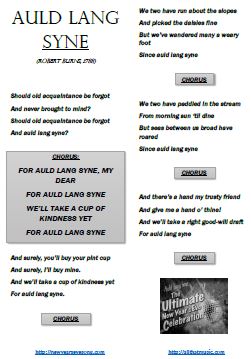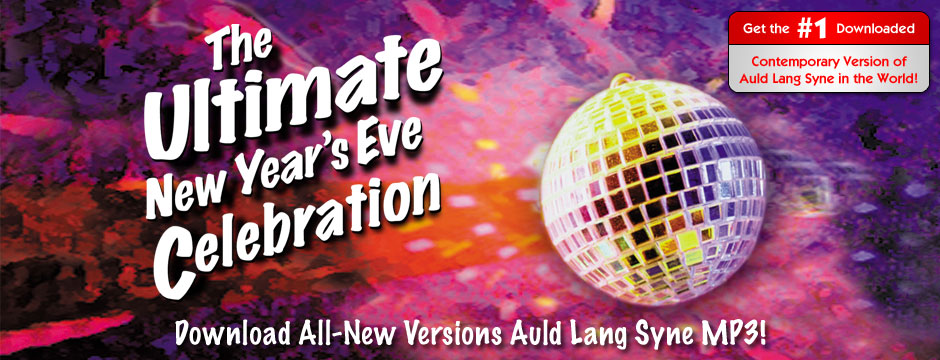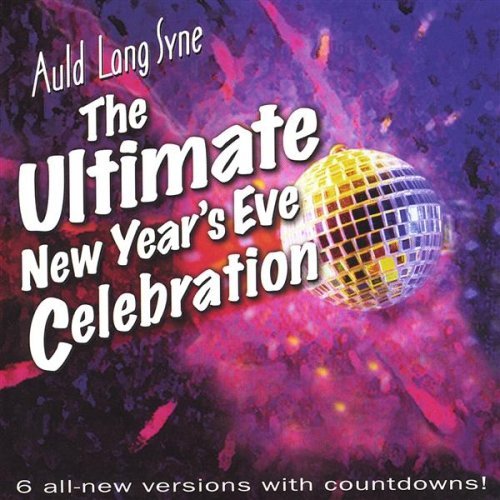The #1 Downloaded Contemporary Version of Auld Lang Syne in the World!
DOWNLOADS
We’ve created all-new, digitally-recorded updates of the classic Guy Lombardo New Year’s Eve track.
CLICK BELOW
to download from the store of your choice:
Play the songs alone, play them pre-mixed with special countdowns, or mix your own party track with the solo countdowns included. Not only do we have the traditional classic, but we’ve also recorded Country, Tejano and Disco versions to match whichever style of party suits you.
We’ve even gone one step further, creating our very own version of “Auld Lang Syne” called “Anthem to the New Year” with brand-new, modern lyrics that keep the feel or the original while adding an uplifting positivity.
We've recently launched our new YouTube channel, which features FREE karaoke versions of the most popular tracks. Sing along with these and hear our entire collection of "Auld Lang Syne" renditions.
TRACK LISTING
- Anthem to the New Year (Vocals) 2:49
- A Swingin’ Country New Year 3:33
- The Tex-Mex New Year’s Polka 3:23
- Auld Lang Syne (Traditional Version) 2:11
- New Year’s Freestyle Disco 4:40
- New Year’s Freestyle Disco (Extended Mix) 6:17
READY TO PLAY PARTY COUNTDOWN MIXES (START AT 11:59 P.M.)
- Funky Disco Countdown / Anthem to the New Year
- Party Time Countdown / A Swingin’ Country New Year
- Party Time Countdown / The Tex-Mex New Year’s Polka
- Prelude Countdown / Auld Lang Syne (Traditional Version)
- Space Age Countdown / New Year’s Freestyle Disco
SOLO COUNTDOWNS ONLY
- Funky Disco Countdown
- Party Time Countdown
- Prelude to the New Year Countdown
- Space Age Countdown
- New Age Stop Watch (no vocals)
- Dramatic Synthesizer (no vocals)
LYRICS
The ball drops. Midnight strikes. The song starts. You don’t know the words.
Face it – how many of us really know the words to Auld Lang Syne? Well, now you do.
CLICK TO DOWNLOAD A PRINTABLE COPY

ABOUT THE PROJECT
“Auld Lang Syne” originated as a folk sing in medieval Scotland. Various versions of the Gaelic lyrics reflected hope, companionship, and the uncertainty of life in those times. The most famous version of the song was written by Scottish poet Robert Burns in 1788. The term “auld lang syne” translates as “old long since.”
It slowly became the anthem for New Year’s Eve, though it has also been known to be played at times when loved ones depart from one another. Consider this – before the advent of the modern car, travel was extremely difficult. A person who departed from their loved ones might not see them for years or decades – if indeed the ever saw them again at all. “Auld Lang Syne” became a very poignant song in which the singer recounts “the good ol’ days” while offering deep hope that they would one day again “take a cup of kindness” with their departing loved one. Those same sentiments pretty much fit people’s mood on New Year’s Eve – a remembrance of beautiful times past, and hope for union and harmony through the future.
In the 1920s, band leader Guy Lombardo began broadcasting New Year’s Eve celebrations nationwide. In 1939, Lombardo and His Royal Canadians recorded the definitive instrumental version of “Auld Lang Syne” just as World War II was beginning. In the years that followed, as families were separated by war, the song took on a special importance and slowly became an annual national phenomenon. In 1947, Lombardo recorded another version that included vocals – though only the first two of Burns’ verses.
By 1999, music store owner George Reynoso had spent years hearing customer requests for an updated version of the song, though no one had really stepped up to make one. In working with Grammy-winning producers to record an updated version of Lombardo’s classic, he also had the idea to create an album containing several different interpretations of the song in different genres – something that could be played in any New Year’s Eve Party situation. On top of that, the CD/download age allowed for versions with and without a countdown into the New Year. By the time the project was done, there was even an entirely new version of “Auld Lang Syne” called “Anthem for the New Year,” mixing Burns’ original lyrics with entirely new verses that focused on the more hopeful feelings the song creates.
Since its release, “Auld Lang Syne – The Ultimate New Year’s Eve Celebration” has become the #1 contemporary version of “Auld Lang Syne” in the world. It’s kind of amazing to be connected to such an warm, ancient tradition, and it gives us great pride to be part of your New Year’s celebration – wherever you are in the world.



